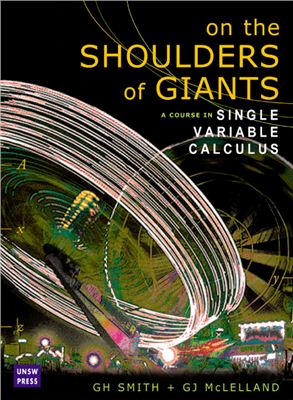University of New South Wales Press, 2002. - 304 Pages.
This book presents an innovative treatment of single variable calculus designed as an introductory mathematics textbook for engineering and science students. The subject material is developed by modelling physical problems, some of which would normally be encountered by students as experiments in a first year physics course. The solutions of these problems provide a means of introducing mathematical concepts as they are needed. The book presents all of the material from a traditional first year calculus course, but it will appear for different purposes and in a different order from standard
treatments.
The rationale of the book is that the mathematics should be introduced in a context tailored to the needs of the audience. Each mathematical concept is introduced only when it is needed to solve a particular practical problem, so at all stages, the student should be able to connect the mathematical concept with a particular physical idea or problem. For various reasons, notions such as relevance or just in time mathematics are common catchcries. We have responded to these in a way which maintains the professional integrity of the courses we teach.
This book presents an innovative treatment of single variable calculus designed as an introductory mathematics textbook for engineering and science students. The subject material is developed by modelling physical problems, some of which would normally be encountered by students as experiments in a first year physics course. The solutions of these problems provide a means of introducing mathematical concepts as they are needed. The book presents all of the material from a traditional first year calculus course, but it will appear for different purposes and in a different order from standard
treatments.
The rationale of the book is that the mathematics should be introduced in a context tailored to the needs of the audience. Each mathematical concept is introduced only when it is needed to solve a particular practical problem, so at all stages, the student should be able to connect the mathematical concept with a particular physical idea or problem. For various reasons, notions such as relevance or just in time mathematics are common catchcries. We have responded to these in a way which maintains the professional integrity of the courses we teach.

